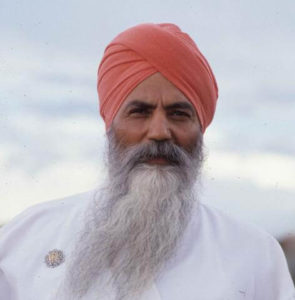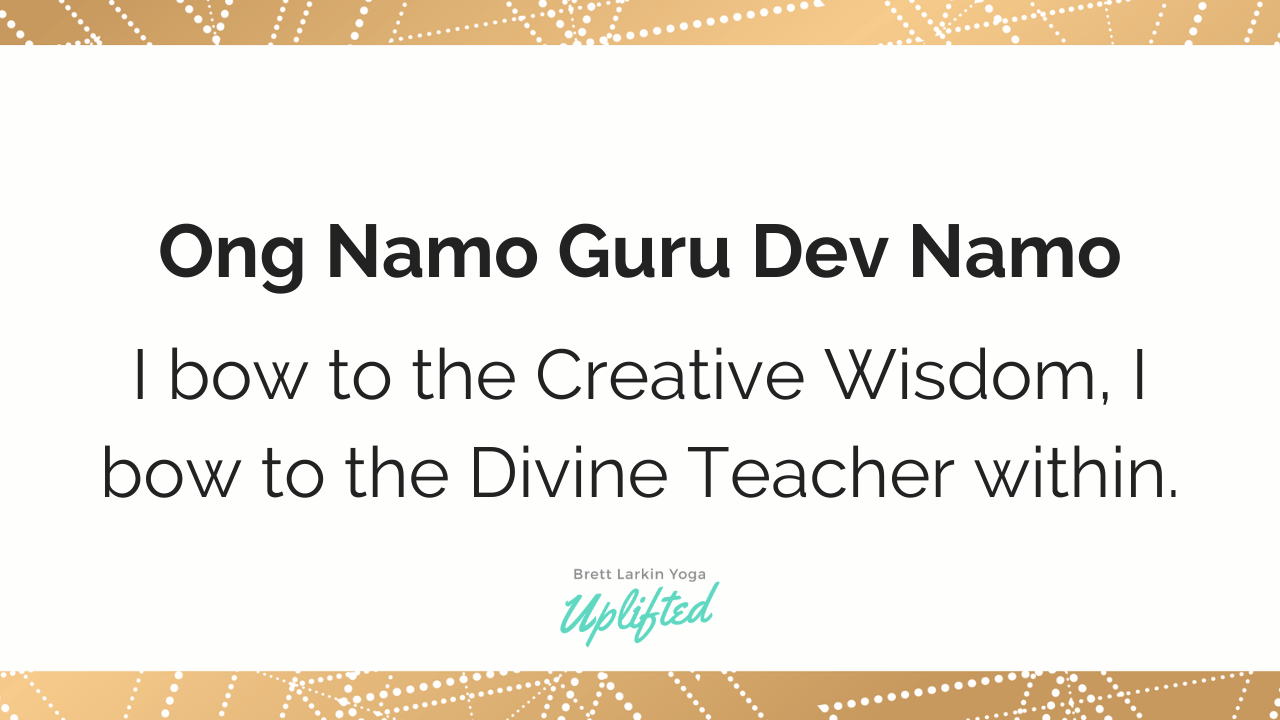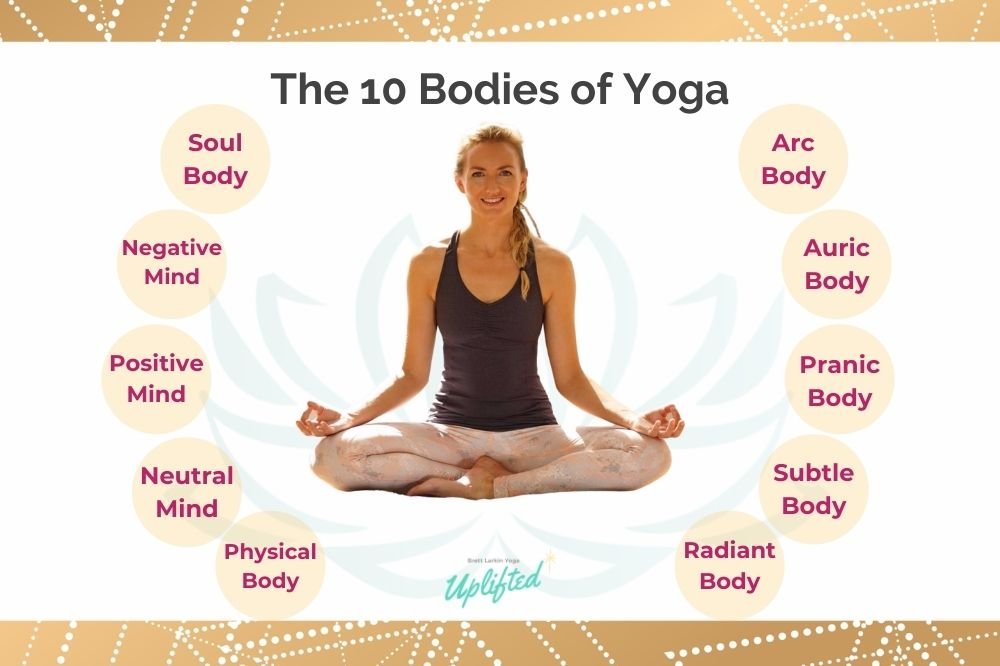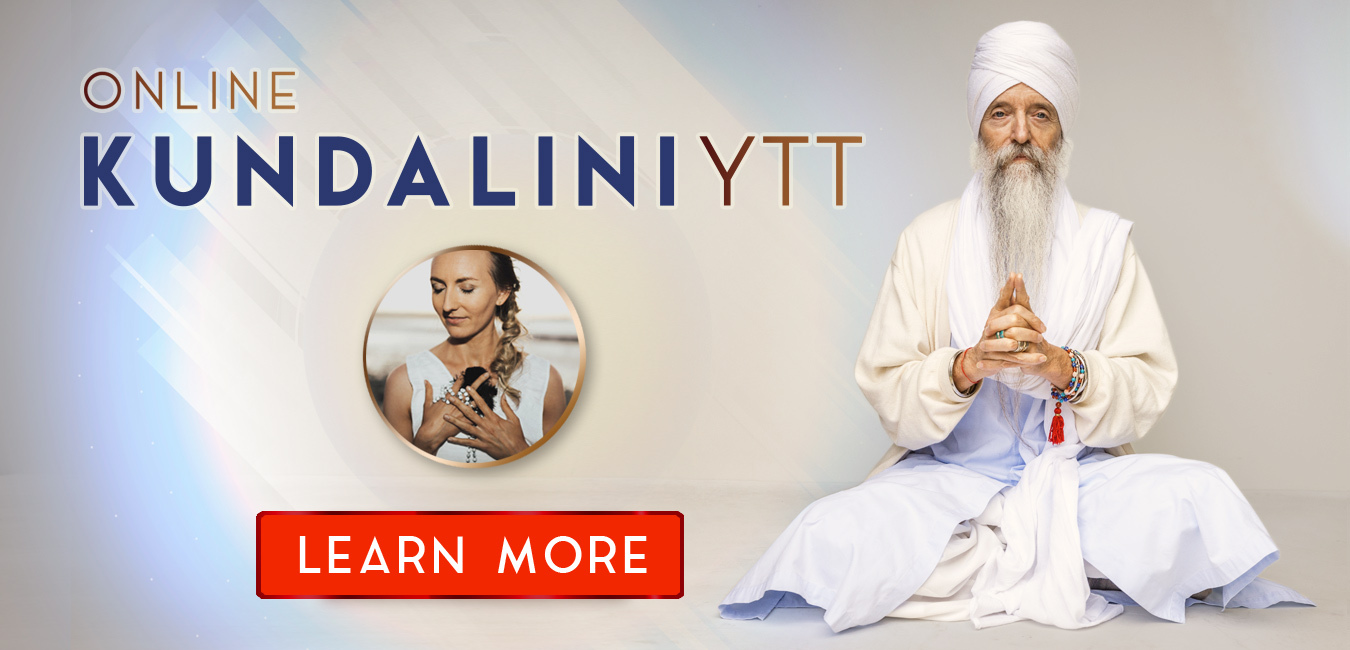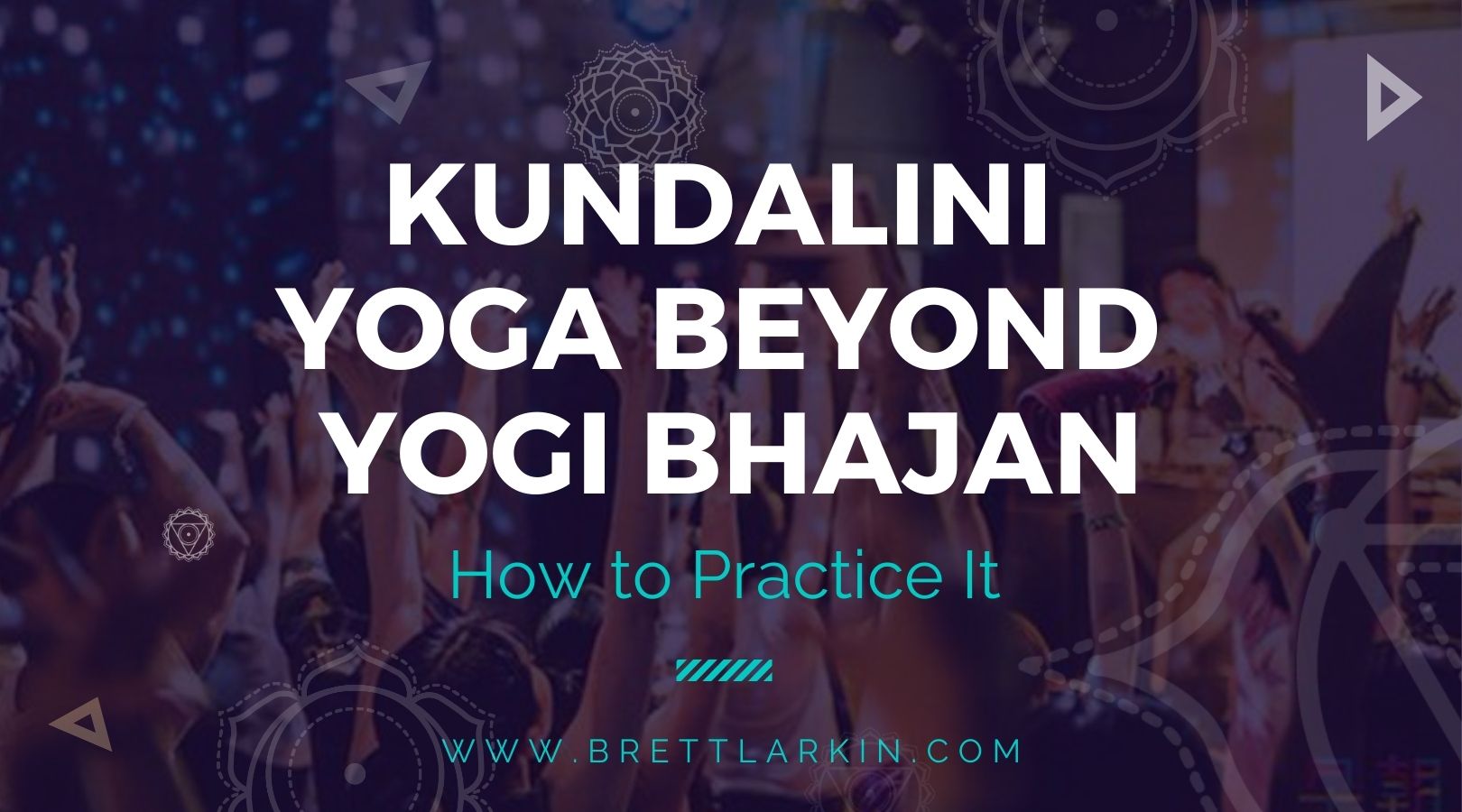
Trigger Warning: This article contains reference to sexual assault. If you’re a survivor or loved one of a survivor seeking support to heal from an experience of sexual abuse, me too can help.
I want to start this article by stating complete and unconditional support for victims of abuse reading along. I see you: You are not alone. If you think yoga can help, please keep reading 😊
No single individual has been more influential on Kundalini yoga as we know it today than Yogi Bhajan (1929-2004), the controversial spiritual teacher most widely credited with bringing the practice to the West. Recently, however, his legacy has come under broad debate with dark revelations shared by courageous former students in the Kundalini yoga community. Yogi Bhajan was a tyrant and a predator, according to more than 36 individuals who reported him for various forms of sexual assault, sexual battery, and sexual harassment following his death (confirmed by an independent investigation).
If you’re a Kundalini yogi, you may be thinking: So what now? How do we move forward? Is the practice itself to blame for the abuses of power we have witnessed at its highest level of leadership? These questions are even more difficult for the many yogis who have experienced the benefits of Kundalini yoga first hand. We wonder:
Can we practice Kundalini yoga that doesn’t come from Yogi Bhajan?
My answer to you is yes, we can do that. Aaand, I invite you to take an energetic perspective on this dilemma, too. First – yes: there are many, many Kundalini practices that we can safely say do not come directly from Yogi Bhajan; including many techniques from the formerly copyrighted practice that come from “Kundalini Yoga as Taught By Yogi Bhajan”. I’ll share these more on this below.
And the energetic perspective?
It can be so tempting to try to “wash our hands” of any icky issue like this by distancing ourselves from the perpetrators and anything associated with them. The problem with this approach is that it just doesn’t solve our problems in the long run. Our efforts to avoid the issue often enable it to control our actions. In karmic terms, this type of action even adds to our karmic debt!0 😮 And just like that, we become part of the problem.
Soooo, let’s open up our options and step out of the shadow of authority. What if we ask:
Can we practice Kundalini yoga to address the root causes of abuse and empower practitioners to live in their true power?
The answer to this question is – absolutely 😊
In this article, I’ll tell you how. Keep reading to learn practices, techniques and perspective to uplift your Kundalini yoga practice to a higher level of awareness than ever before.
What Exactly is Kundalini Yoga as Taught by Yogi Bhajan?
Before I answer this question, let’s get clear on one thing first: Kundalini Yoga as taught by Yogi Bhajan® (KYatbYB, for short) is a registered trademark held by YB Teachings, LLC, the company that distributes Yogi Bhajan’s teaching materials. It applies to “instructional and teaching materials, namely books featuring yoga instruction”, featuring that title. And that’s it.
In the 1970s – the mid 2010s, it was common for entrepreneurs in the yoga industry like Yogi Bhajan (did you know he also founded Yogi Teas? Yup!) to claim copyright interest in their practices in an attempt to gain exclusive rights to cash in on their brand. Yes, that’s right – for profit. Cash monayyy. 3HO, the company Yogi Bhajan founded to spread his teachings, has trademarked elements of Yogi Bhajan’s teachings (like White Tantra Yoga®) in order to protect the distribution of educational materials.
Thankfully, though, the courts have ruled that nobody can “own yoga”. So, for the record: KYatbYB is not a legally protected sequence of Kundalini yoga poses, and cannot be in the United States, according to copyright law governing the yoga industry in the United States.
Ok, now that’s out of the way!! Historically speaking, the Kundalini yoga that Yogi Bhajan taught is a form of Tantric yoga with roots in the Northwestern region of modern day India. Like all forms of yoga, his teaching was influenced by countless spiritual figures, traditions and cultural currents that flowed around the world and began to manifest during 20th-century as the Kundalini yoga we know today.
Yogi Bhajan’s teachings expanded on the eight limbs of yoga laid out in Patanjali’s yoga sutras to encompass a radical blend of practices including elements of the Sikh religion, numerology, astrology, developmental psychology, strict vegetarianism, and guidelines for living life in modern times. He presented this practice as Kundalini yoga to students in the United States for the first time in the 1970s.
Anywhere you see Kundalini Yoga as taught by Yogi Bhajan® taught, you can be sure that it will include these elements:
1) centering with the Adi Mantra
2) pranayama or warm-up
3) kriya
4) relaxation
5) meditation
6) closing song “May the Long Time Sun Shine Upon You” (from the Aquarian mantras)
You might say that Yogi Bhajan’s teachings are best demonstrated in the Aquarian Sadhana, an intensive early morning practice that involves dressing in all-white, reciting japjii, performing a set of kriyas, and chanting the Aquarian mantras at the break of dawn. The hallmark of Yogi Bhajan’s teachings are in their rigidity and structure. The kriyas in a KYatbYB class, for example, can only be taught in a specific sequence, i.e. the sequence originally delivered by Yogi Bhajan.
At the end of the day, though, very little about Kundalini Yoga as taught by Yogi Bhajan was truly created by Yogi Bhajan. It was registered and branded as Yogi Bhajan’s individual work and sold widely based on the story that this master was sharing a secret tradition that had, until the 1970s, only been taught in closed spiritual communities. As recent scholarship has revealed, however, we now know that Yogi Bhajan’s teachings relied heavily upon those of Swami Dhirendra Brahmachari (1924–1994) and the Sikh Sant Maharaj Virsa Singh (1934–2007), and transformed with the cultural shift of the 1960s.
Whatever you’ll practice in a Kundalini yoga class at your local studio, and here online with me!, is the result of countless communities, teachers, and students – not one teacher, and definitely not just Yogi Bhajan. And to me, that’s the beauty of practicing yoga! To practice yoga is to interpret the teaching as you originally received it – and, when the times change, to re-interpret it – just as Guru Singh and I teach all of our students in Kundalini University 200 hour yoga teacher training.
Let’s see what that looks like ✨
Kundalini Yoga Philosophy: The Yoga of Awareness
“Kundalini yoga is a method to become nothing, so that everything can flow through you. That’s all it is.” Yogi Bhajan, The Teachings of Yogi Bhajan (1977)
Kundalini is first mentioned in the Upanishads, a spiritual text dating to the fifth century, B.C., and was known as a “householder’s” yoga: it was practiced by people with families and jobs and businesses, not wandering ascetics or warriors.
At its heart, Kundalini yoga is about developing spiritual awareness by awakening Kundalini energy that lies dormant at the base of the spine and channeling it upward through the seven chakras. This can lead to an intense experience known as Kundalini awakening, when the Kundalini serpent rises up through all of your energy centers and penetrates your crown chakra. While a Kundalini awakening can happen as the result of decades of directed practice, it can also happen more spontaneously – which is, in part, why Kundalini practice continues to evolve and change. Because our energy centers are affected by everything we do, both our practice on the mat and our lives ultimately effect the flow of Kundalini energy and how we experience it.
You Might Also Like: How to Resolve Intense & Traumatic Kundalini Awakening
The practice is a science, based on new discovery, continuous improvements, and building greater awareness on various levels. The ultimate philosophical purpose of Kundalini yoga – whether you’re chanting the Adi mantra or practicing ego eradicator – is to awaken to higher consciousness. It’s a deeply spiritual journey. Walking the path involves facing the shadowy parts of your being and choosing light, healing, and higher consciousness. It’s so, SO powerful!
If you’re a systems-person, you’ll love Kundalini yoga. It uses a unique system known as the ten bodies to map the layers of our being. Built upon the ancient concept of the five koshas, the ten bodies system contributes a more nuanced understanding of the mind and its “modes” as well as our energy layers and how they work to the traditional system of thought. Paired with study of the seven chakras, Kundalini yoga philosophy practically gives you an all-in-one road map to discovering your higher self!
If you ask me? No single set of teachings has made a greater impact on my personal growth than the chakra system. I know if you try my free 7-day chakra program, you’ll totally see what I mean!! The beauty of the chakra system is that you can truly use it in whatever way is most helpful for you – there’s no single way to approach this rich tradition of wisdom.
In fact, experimentation is key to the Kundalini tradition as well. Kundalini is a science that has been refined over hundreds of years through constant experimentation. The “success” of these experiments is determined by what the experience of teachers and our communities – together – tell us works.
And this brings us full circle! For anyone out there who wants absolutely nothing to do with Yogi Bhajan, your practice can still honor the Kundalini tradition through your Golden Chain. This beautiful concept is the energetic wisdom of all the teachers you wish to honor in your lineage – past, present, and future. Constructing your Golden Chain is a practice of gratitude and positive affirmation toward the energy you want to welcome into your life: it can include anyone who has inspired you, from ancestors to Paramahansa Yogananda to your favorite artist.
On the journey to realization, understanding the many influences that we credit with our wellbeing is essential to the practice of Kundalini yoga without Bhajan, or any other guru, above us.
As Guru Singh, my co-educator and Kundalini yoga teacher in Kundalini University, says:
“Without the belief that you have someone over you, other than the Almighty cosmos – you become free.” Guru Singh

Focus Areas for Energetic Healing
I believe in the power of yoga to heal – and when paired with common sense, there is LITERALLY no limit to our collective growth. Here are a few areas to consider holding your energetic focus for healing and collective transformation (affirmations in the links below 👍):
- Make Reparations to Survivors. If you’re looking for a concrete way to right the wrongs committed in the Kundalini community, make reparations to the survivors of abuse at the hands of Yogi Bhajan by donating to A Fund for Women. They are an independent, non-profit legal consulting group that fights for justice on behalf of women, and work specifically with women harmed by Yogi Bhajan.
- Honor the Divine Feminine. The divinity of woman is central to the Sikh faith and Kundalini yogic philosophy as well. How did we disconnect from this vital wisdom? We need to reclaim the sacred role of women as creators and destroyers in this world to move on from the violence perpetrated against womankind.
- Think for Yourself. Are you making your own decisions – or are you deferring to others to make them for you? True spiritual teachings should empower you to make your own decisions, better. If you’re caught up in any community that makes decisions about your life for you, spiritual or otherwise, take a moment to pause. Are you thinking for yourself?
- Recognize Spiritual Bypassing. Sometimes I listen to people in the yoga community try to explain sexual assault, and it’s just like: The more you say, the worse it gets. Everybody has a blindspot, and even the most loving yogis are no different! We want everything to have a place in our belief system, but we can cause harm by avoiding, dismissing, or over-simplifying complex issues with spiritual explanations. This is known as spiritual bypassing, and it’s a no-go.
- Deal with Denial. Why is it that we’re always shocked when people in power abuse their privilege and majorly eff up? Every time, it’s like wow!! No! The shock itself plays a role in the denial that inevitably follows whatever the latest scandal might be. And you know what? We need to do better. We need to open our eyes and pursue self mastery with higher consciousness for the ways we’re choosing not to see.
- Commit to Discipline. Kundalini yoga amplifies all of our qualities – our positive and not so positive ones – by sending a powerful energetic charge through our chakras. Without making a commitment to moral discipline, we risk doing harm to ourselves and others through traumatic awakening experiences, developing codependent relationships within our practice community, and generally losing ground in the high of an intense practice.
Kundalini Yoga Techniques
So, ok – yes philosophy! But what does Kundalini yoga look like in practice, and how is it different than other forms of yoga?
Kundalini is an active form of yoga that awakens Kundalini energy through mantra, chanting, pranayama, mudra, repetitive movement and asana. Kundalini yoga refers to these techniques, along with cleansing practices like neti-potting, as kriyas. Kriya is simply the Sanskrit word for “complete action”, and in Kundalini yoga, these actions are designed to prescriptively purify the energy channels. Sat Kriya is one of the most popular Kundalini yoga kriyas, which basically involves sitting with hands clasped in Kali mudra and chanting Sat Nam for up to 30 minutes. The engaged seated position and rhythmic chanting activates the root and navel lock, creating waves of energy that flow upward through the chakras and generate a powerful calming effect in the mind.
This is just one example of how shabd guru, or sacred sound, is woven throughout Kundalini practice with Gurmukhi mantras. A close relative of Sanskrit Gurmukhi is the sacred script used by Sikhs for writing Punjabi and – you guessed it! – chanting mantras. The various Gurmukhi sounds activate energy in the head, the heart, and the belly in different combinations, and they prepare the body and mind for physical practice. Almost all Kundalini yoga classes will involve chanting of SOME kind, often included at the beginning of class to tune in to the vibrations of the universe and the group energy, and at the end of class to seal practice.
In comparison to hatha or vinyasa yoga, Kundalini yoga is more spiritual and energetically-centered. Kundalini yoga classes often focus on a specific chakra. Your Kundalini teacher might guide you through poses, mantra and meditation to bring awareness to that energy center and clear blockages in that area. You can expect to stay in poses for much longer than you’re used to in hatha yoga or vinyasa yoga, and experience sensations that may trigger strong emotional responses. This is totally the point in Kundalini yoga! The objective is to illuminate the path to higher consciousness by revealing the ego – and how it’s getting in your way.
Full disclosure here: When I first tried Kundalini yoga, it triggered a full-on panic attack. I remember feeling like we spent FOREVER in each exercise (I was practicing a lot of vinyasa yoga at the time), and the more energy we built throughout the practice, the more frustrated I became – until I just lost it during breath of fire. My advice to first-time Kundalini yogis is to be prepared for a psychological challenge, and you’ll do just fine.
5 Big Reasons to Practice Kundalini Yoga
Kundalini yoga is like a microcosm of the spiritual world. With its roots in counterculture and aspirations for the Universal, the heart of this tradition is currently reaching a new form of expression. Through this sublimation, we are moving beyond the worship of “one big personality” to the recognition of student, teacher and master within every personality. To practice Kundalini yoga is to awaken to the call of the times and experience your higher self as an expression of the Divine order – what better reason to practice is there than that?!
Many yogis who join my Kundalini training are simply interested in specializing their general yoga education, though and that’s totally welcome! Whether you want to teach or simply explore the depths of this powerful practice, here are a few other good reasons to practice Kundalini yoga:
- Recharge your energetic essence. Practicing Kundalini yoga will distill what makes you, “you” into its most powerful form. Cultivating this essence, known as Kundalini energy, is the key to awakening to your true potential and achieving higher consciousness. Ummm hello, YES! If you’re feeling a bit blah, Kundalini yoga will lift your energy in no time and then guide you to channel it through specific meditations. A big bonus? When you awaken Kundalini energy, you’ll also strengthen your aura – protecting you from negative influences and attracting good things into your life.
- Create a transformational shift in your life. Change isn’t easy for many people, whether we perceive that it’s needed or would do anything to keep things as they are. No other yoga practice will guide you to see yourself, ego and all, in quite the same way as Kundalini yoga – the yoga of awareness. And this is absolutely essential for creating change. We can’t change what we can’t see, right? If you’re ready for transformational shift, whether you’re changing careers, evolving in your relationships or inviting healthier habits into your life, commit to a regular Kundalini yoga practice and get ready for big things!
- Gain a deeper understanding of the cosmos. Kundalini yoga is underpinned with rich philosophical traditions that make the esoteric accessible in everyday practice. It’s what makes Kundalini so powerful – and so mysterious ✨ These traditions include metaphysiology, cosmology, and the science of kriya. Studying Kundalini philosophy will give you the tools to map the spiritual cosmos and your place in it as an enlightened being. Amazing, right?!
- Honor your Golden Chain. The wisdom we gather in life comes from so many sources – how are they all connected? Kundalini yoga has a special name for this: The Golden Chain. This elegant concept proposes that the energetic wisdom of all of your teachers – past, present, and future – is united in you as a student. Your Golden Chain can include anyone from your mother to Ram Das, and your favorite band. Practicing Kundalini yoga encourages you to honor the wisdom imparted by all of your teachers, amplifying your gratitude and elevating your wisdom consciousness. So beautiful!
- Embrace emotional wellbeing. Kundalini yoga has a powerful balancing effect on emotional wellbeing. The practice regulates the nervous system, releasing stress held on the deepest level and transporting you into a blissful, calm state. Chakra meditation and breathing exercises will guide you toward greater acceptance and understanding of your emotions than ever before.
How to Practice Kundalini Yoga at Home
Are you excited to start practicing Kundalini yoga at home?! Me too!
If you’re nowhere near a yoga studio that offers Kundalini yoga though – don’t worry. My #1 tip for you, beautiful beginner, is to check out my library of Kundalini content on Youtube. You’ll find beginner-level classes that walk you through all of the most important aspects of Kundalini practice.
Aren’t sure where to start? Check out my Tune In video. In it, I break down one of the most sacred chants to Kundalini practice – the Adi mantra – and give you all of the pointers I wish I had when I first started practicing!
Next, I recommend this ahh-mazing Kundalini class just for beginners. It’s about 15 minutes of essential practice at just the right speed for your first yoga class in the Kundalini style:
If you want to go deeper? Journey into the energy body! Here’s my complete breakdown of the chakras and how Kundalini energy flows through them – in easy to understand language:
Kundalini Yoga: An Evolution
Well friend, there you have it!! Whether you’re teaching Kundalini yoga, like me, or interested in practicing it as a student, I hope this article has given you a fresh and hopeful perspective on this rich yogic tradition. If you remember that your practice is for YOU and there’s no limit to your growth, your truth will guide you. With so much love!!
Get 3 Free Training Vidoes from our Kundalini University Experience & Certification Program
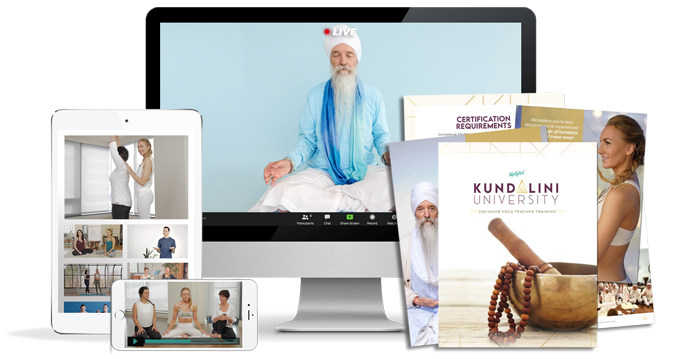
YOU MIGHT ALSO LIKE
- Trauma-Informed Kundalini Yoga: A Heart-Centered Approach to Healing
- Harnessing the Power of Kundalini Divine Feminine for Transformation
- Kundalini for Feminine Energy: Ignite Your Creative Power and Passion
- Mastering the Sufi Grind: Benefits and Techniques for All Levels
- Kundalini Yoga for Chakras: An Uplifted Guide to Energy Balance
- Discover the Benefits of the Gobinday Mukunday Mantra for Well-Being
- Nabhi Kriya: Ignite Your Inner Fire and Personal Power
- Ek Ong Kar Sat Gur Prasad: Kundalini Mantra For Manifestation
- Tantric Har Chant: How It Fuels Prosperity and Inner Power
- Powerful Mantra for Protection Against Negative Energy and Harm
- The Power of Humee Hum Brahm Hum Mantra for Connection and Healing
- The Sa Re Sa Sa Mantra: Connecting Breath, Light, and Creativity
- What Is The Ajai Alai Mantra In Kundalini Yoga?
- What Is Sat Nam Rasayan? How And When To Practice
- The Meaning Of Ang Sang Wahe Guru Mantra in Kundalini Yoga
Get 3 Free Training Vidoes from our Kundalini University Experience & Certification Program


